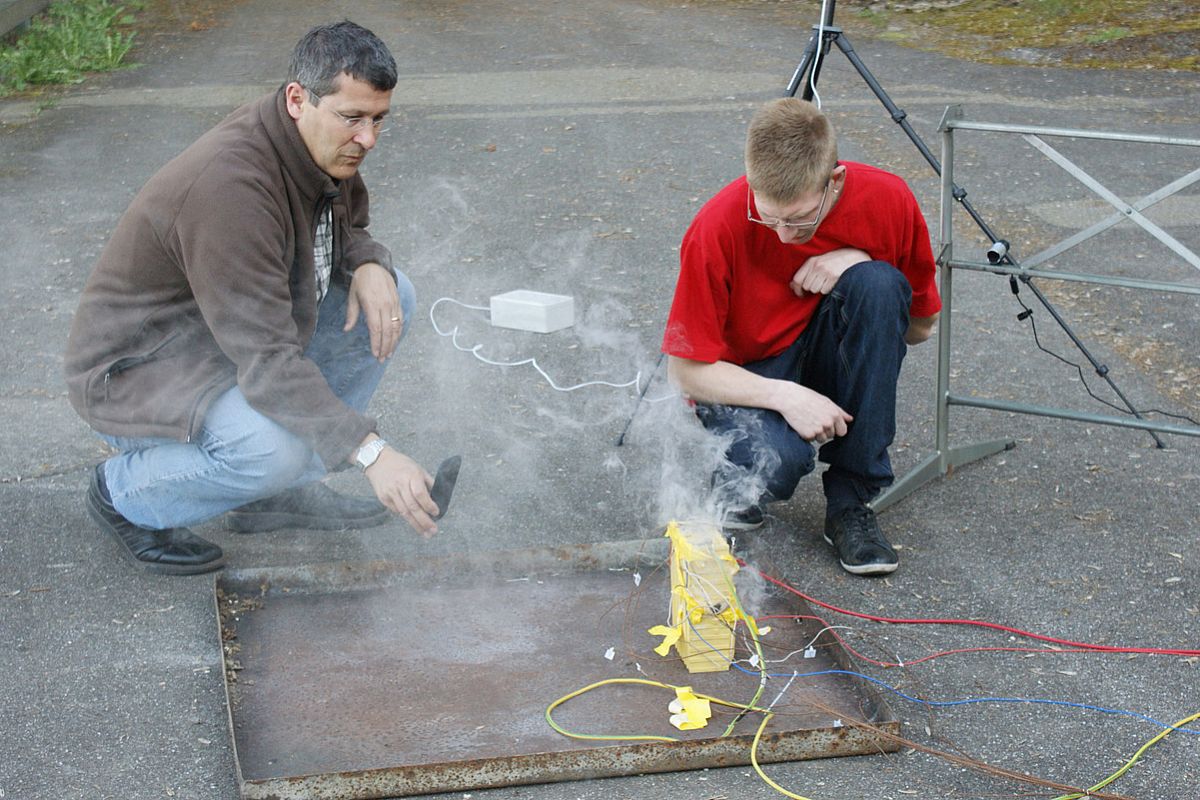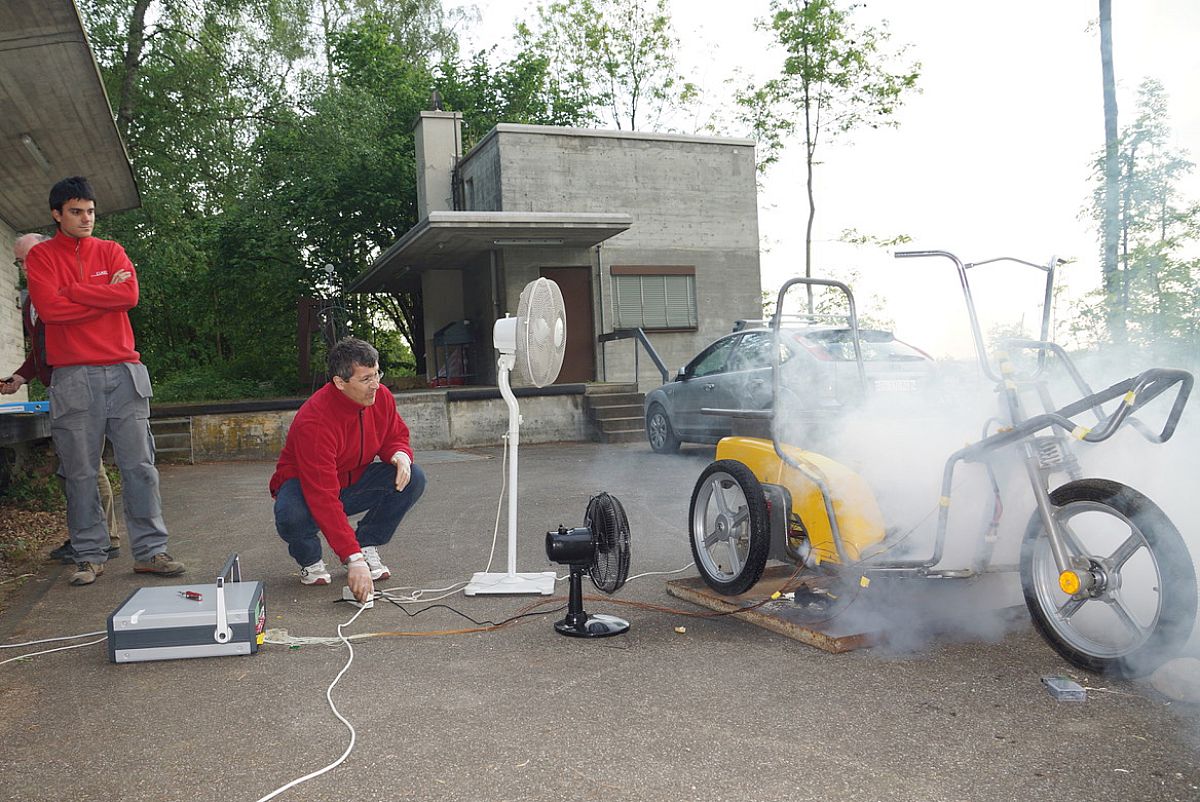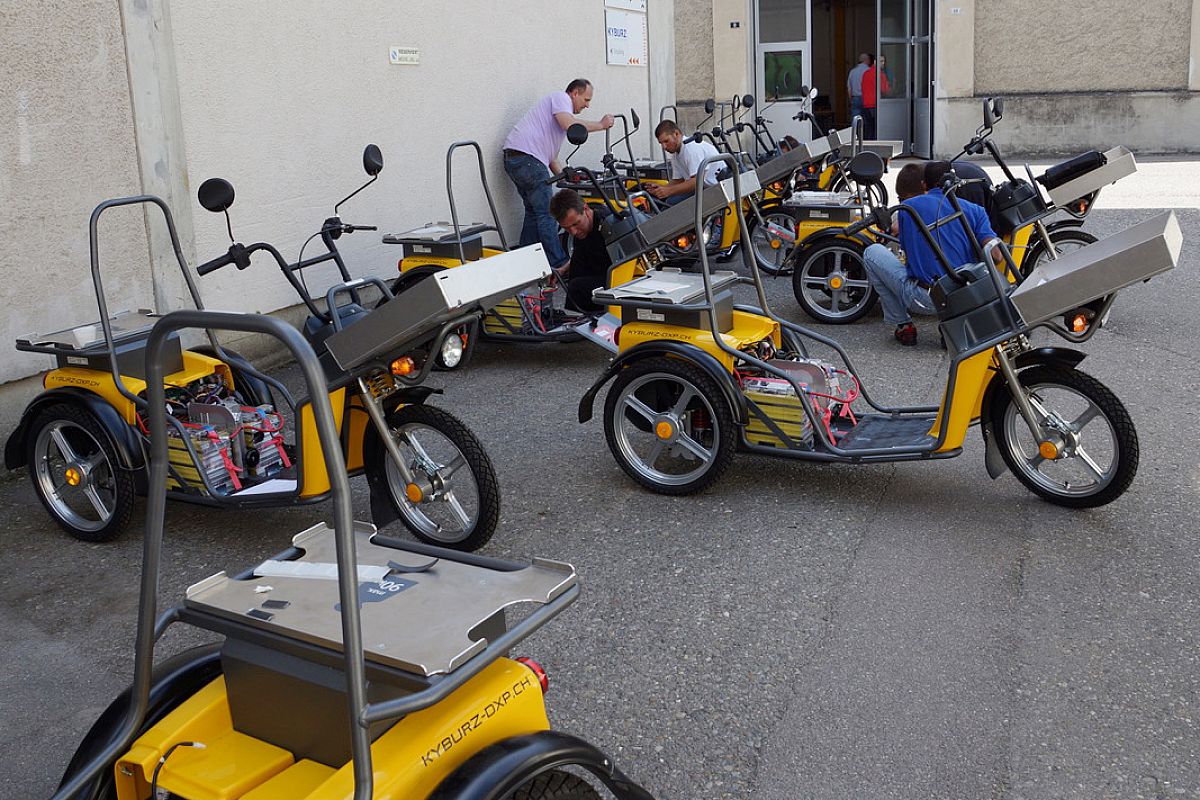Battery fire

I get a call: one of our DXP vehicles had caught fire. Not much had happened. The fire was discovered and extinguished immediately. We immediately sent a mechanic to pick up what was left. When he arrived at our place, I rushed to the vehicle to examine it. After the first inspection, I was struck: it seemed as if one of the cells had been on fire. Surely that was not possible? We had chosen LiFePO4 batteries that were non-flammable. What had happened? I knew immediately that it must have been a chain reaction and that we needed support because we couldn't solve the problem ourselves. I immediately called EMPA. A Mr Held answered. Yes, that was exactly what we needed: A hero. I explained the situation to him and that we needed support. He said he was about to get into the field anyway and that he would take the time to help solve the problem. On the phone we agreed that the first thing we had to do was understand the process. We had to be able to deduce how the vehicle had ignited. To do this, we set up 3 test beams: 3 vehicles that we could ignite and then rebuild. In the meantime, Marcel Held reactivated an old test site from EMPA where ammunition tests had been carried out in the 1960s. The site was outside Dübendorf. It had not been used for many years and was quite dilapidated, situated in the middle of the forest. It was a really idyllic place. He also organised all the exhibition equipment to record the events. A few days later we met at the site. We brought enough batteries and two of the vehicles. Immediately we started with the tests. First we drove a nail through a cell. As expected, it gassed out. Then we overloaded a cell. We were able to overload it by a factor of six. Even then, it didn't burn. It melted like a cheese and exposed its interior. Then came a whole test vehicle in the current configuration. To document everything, we mounted cameras inside the vehicle and recorded their images. Jokingly, the employee who got the cameras inquired whether the warranty claims were also available in the event of a fire? The salesman answered in the affirmative.
We drove a nail into one of the cells and lo and behold: after about 6 minutes, the vehicle started to burn. A first success. Now we could reproduce the fire and learn how the ignition took place. After two more attempts, it was clear: The cell gassed out normally. Some of the hot electrolyte was splashed onto our battery management print. Since the electrolyte was hot, it was very aggressive and decomposed the protective varnish. This caused the BMS print to become conductive. The current began to flow out of the still healthy cells via this print. We put a lid on the batteries. This, however, prevented all the escaping gas from evaporating. Due to the heat, small amounts of hydrogen were also formed, which were happily collected in the battery lid. The current flowing out via the BMS prints now heated the gas further: From 250 degrees to over 750 degrees. That was the point at which the hydrogen ignited and deflagrated. This deflagration - actually very harmless - together with the already very high temperature was just enough to ignite the cable harness. It burned slowly, like a fuse, and then set fire to an ABS part, which eventually ignited the whole vehicle. It took us two days to understand exactly what had happened. Now we had to find a remedy: We chose a different protective lacquer for the prints, changed the battery covers so that the gas produced in case of outgassing would be well drained and changed some materials to flame-retardant. Exactly one week later, we had found effective remedies and tested them successfully.
There was another puzzle to solve: Every evening after the test series, we ate together at a kebab stand in Dübendorf. I felt sick every time afterwards. At first I thought it was the kebab. But obviously the others in the team felt the same way. We asked a chemist from EMPA and his skin colour changed: he turned white as a sheet. Were we out of our minds? We are only allowed to carry out such an experiment with intensive protective equipment. The resulting gas probably contained hydrofluoric acid, which was very toxic. I asked whether long-term damage could occur. The chemist said no. Either we would die instantly or we would survive. Long-term effects are not known. Well, at least!
We took the chemist's instructions to heart: For the next experiments, we first looked to see where the wind was coming from. To be on the safe side, we set up some fans and we were in the area where the gases did not collect. Now we could also enjoy our kebab in the evening.

We knew what we had to do. Now we only had to retrofit 1700 vehicles that had already been delivered. I strongly advised the customer to place fire extinguishers next to the vehicles and only load them when someone was in the area. The customers reacted disturbed. Such a change could not be implemented quickly and a budget for the extinguishers had to be found first.
Meanwhile, we conducted a large-scale retrofit tour. We recruited staff and formed up to 8 groups of 2 to 4 people each. We wrote to our suppliers and some of them provided their staff. In addition, we also increased the office staff. Finally, all the customers had to be contacted and informed about the upcoming campaign. I called old acquaintances to see if they would be willing to work for me. Two people who spontaneously agreed at that time are still working in our team today - more than 10 years later. In front of our workshop, we practised retrofitting on our own vehicles. The teams took on vehicles. Times were stopped, work was fine-tuned and everything was documented. Material was procured and a barrel line was formed.

I bought two additional transport vehicles to equip the 8 teams and a few days later the teams got going. After exactly eight weeks, all 1700 vehicles had been converted. We were proud of our achievement. Shortly after completion, I received confirmation from our biggest client that they now had the budget and could procure the fire extinguishers. I just said that they were no longer necessary.
I learned from this:
- Occasionally, a real hero helps.
- In a fire, it is important to keep a cool head.
- The nail test must not only be carried out on individual battery cells, but in the entire vehicle, so that the surroundings are also included in the test.
